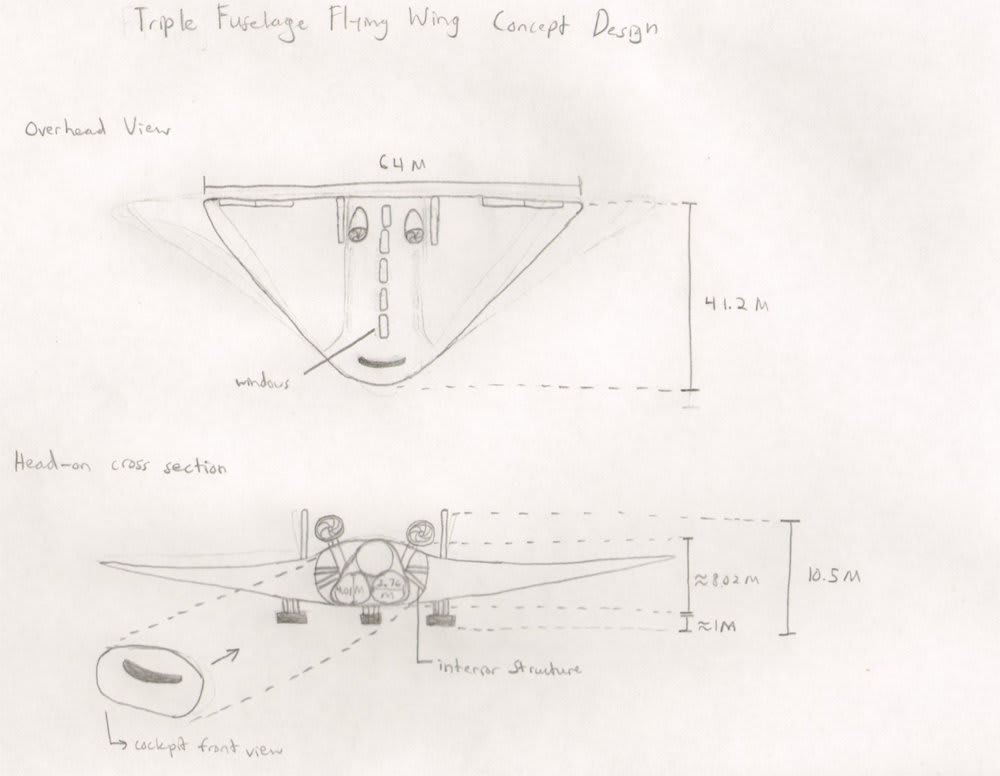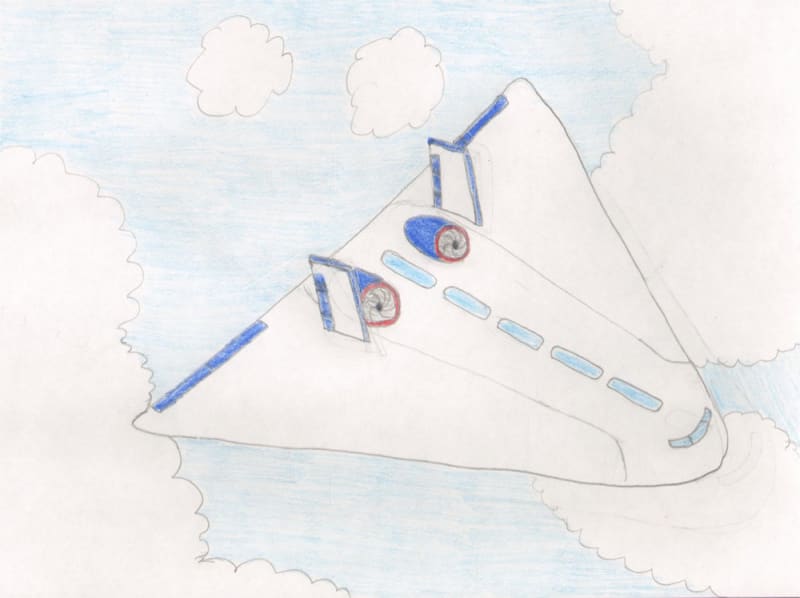The Triple Fuselage Flying Wing concept takes the idea of an aircraft built in the shape of one large wing to a new level. The idea of the triple fuselage is using multiple, in this case three, standard tube fuselages and building a flying wing body structure surrounding them. As seen in the illustration, the three fuselages would be positioned equidistant from the airplane's roll axis. This would ensure that while the plane is banking, the forces felt by the passengers would be similar to those felt in a traditional, single-fuselage aircraft. The point of this design is to avoid the placement of passengers far away from the roll axis of the aircraft, which to my knowledge occurs in all contemporary flying wing concepts I have laid eyes on. In those diagrams, the fuselage is box shaped and the passengers all lie on a single level. Due to the shape of the plane itself the fuselage is wider than it is tall. As a result the occupied space is farther from the roll axis than usual, and to some this may be disgruntling. Thus the triple fuselage concept would reduce if not eliminate this problem. The three separate fuselages would be attached around a center, beam if you will, that runs the length of the airplane's interior, and the rest of the vehicle would be constructed around this. Each fuselage would load and unload separately, and the top fuselage would be built with windows on the ceiling for those uncomfortable with enclosed spaces.
The manufacturing capability needed for the flying wing concept of an aircraft has already been proven; an example being the B-2 Spirit stealth bomber. Although on a commercial scale such a design has not yet been produced, the aircraft industry possesses the technology and sophistication to produce said design. Essentially the three fuselages within the wing are of the same size and shape of a standard Boeing 737 800 fuselage. Attaching these all together around a center beam would be a simple task. The more challenging aspect would be the material needed to build a reliable flying wing of this size. However the rapid advancement in composite technologies would enable the aircraft to be constructed if present construction materials do not prove viable for use.
As for marketability, the triple fuselage follows the same principle as any other flying wing aircraft. The efficiency and lift produced are higher than that of a regular airplane model in the sense that the whole vehicle is one large wing. The mounting of the engines above the aircraft would also make it quieter for those on the ground outside the airplane. The triple fuselage itself is designed to maintain the same flying environment for travelers while utilizing the increased economics and efficiency that come from a flying wing aircraft. As the aircraft of today are becoming more efficient, cost-effective, and eco-friendly the Triple Fuselage Flying Wing will fit right in with the new aircraft technologies of the future.
Like this entry?
-
About the Entrant
- Name:Alex Oconnor
- Type of entry:individual
- Patent status:none





